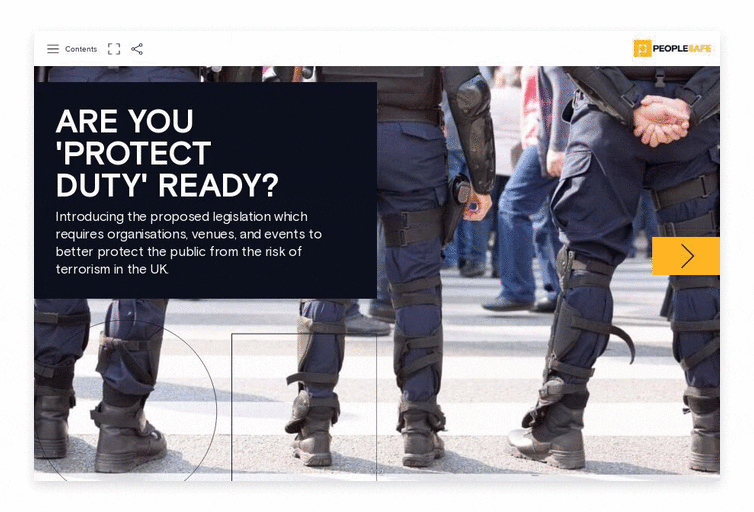Crisis events come in all shapes and sizes and will have varying degrees of impact on businesses and their workforces. In some cases, the effect of a crisis will be localised, while in others it will affect an entire organisation. For example, a cyber-attack might impact a whole organisation, whereas a weather event or terror-attack will only endanger people within a certain geographical region. Whatever the scale or severity of the event, one thing remains consistent: it is an employer’s duty of care to safeguard its affected employees.
Communicating quickly and clearly during a crisis
After any crisis event, it’s crucial for employers to alert, protect and reassure their employees with fast, accurate information. By its very nature, a crisis is likely to be unique, complex and fast moving, so the methods employers use to notify staff need to be chosen carefully. Effective crisis communication boils down to saying the right things to the right people at the right time.
A lot of organisations rely on social media platforms such as Facebook, WhatsApp and Twitter for their crisis messaging. Social media allows for instant circulation of information to pre-existing groups in a way that can be warm, reassuring and informal – allowing an organisation to shape the narrative around any event and provide defined audiences with regular updates. However, social media can be unreliable and is often not fit for purpose when it comes to delivering crisis communications to staff that could be at risk.
The risks of social media in an emergency
Relying on social media for crisis communications carries several risks, including:
Platform downtime
A key risk with any social media platform is the risk of the platform going down, or of network failure. In times of a major outage where multiple social media networks are down, billions of people can be affected and unable to communicate.
In an emergency, when it’s critical that your staff receive your communications in a timely manner to ensure they can react accordingly, platform or network downtime could mean that your staff members fail to receive your messages until hours after you send them out. This could expose your team to health and safety risks until they receive your message, leaving you liable for anything that happens during this time.
Missed messages
When you send a message out via any social media platform, you’re at the mercy of its algorithms which are constantly changing. While some staff might receive a notification that you’ve posted an update or see it at the top of their home feed, others may not see it for several hours, or even days. As a result, people will be acting on outdated or incorrect information.
Even direct messages risk being missed if the platform is regularly used for everyday communications. Too much depends on a user’s personal settings, whether they have the right push notifications enabled, and how they engage with the people and accounts in their network. There’s a strong possibility your important news could get lost among the viral videos and posts from friends, or even casually scrolled past by the people who need to see it most.
Mixed messages
Any message put out into a public forum has the risk of being reshared, taken out of context or commented on in a way you haven’t anticipated. By publishing on social media you are able to craft the original message but you forgo control over what happens next. What you had intended to be a straightforward, informative piece of business communication could actually become a public conversation; when heightened emotions such as anger or worry are added to the mix, this could become confused or confrontational, creating panic among the people you were trying to inform and reassure.
You should also bear in mind that your post will remain on social media until you delete it. There is always the possibility that your message could be shared at a later date, once the danger has passed, which could create unnecessary panic among your audience.
Privacy problems
Even encrypted social media platforms like WhatsApp can create privacy issues for your organisation if messages are forwarded to others outside the primary contact group. To play it safe, organisations should treat anything said on social media as a public conversation. So, if a message contains sensitive or confidential information that is crucial to staff safety or wellbeing, social media isn’t the right place to share it.
Reach and response
While some engagement analysis can be conducted on most social media platforms, none will allow you to efficiently and accurately report on successful message deliveries, opens and responses.
In addition, the platforms are unable to ensure your crisis communication gets delivered when ‘do not disturb’ is turned on or acknowledged when phones are set to silent. If it’s crucial that your message reaches every person on a list, and you want to be 100% certain that they have opened and read your message, social media simply doesn’t have the capabilities you need.
Protect Duty Legislation
The Protect Duty legislation, also known as Martyn’s Law, is a proposed piece of UK legislation aimed at improving public safety by requiring organisations to be better prepared for terrorist attacks. The new legislation will apply to all 333 local authorities in the UK and an estimated 650,000 UK businesses, ranging from large venues such as the O2 Arena to smaller venues such as theatres and even large restaurants.
Under the proposed outline, organisations will be required to put all reasonable security measures in place to reduce the risk of terrorist attacks. It is proposed that in order to comply, organisations must be able to prove that the threat and risk impacts have been considered and appropriate measures have been put in place as a result.
When a critical event unfolds it can be difficult to safely manage the public, but this is now essential. Public space operators must be able to get the right information to the right people at the right time to ensure an effective outcome.
Best Practices for Crisis Communication
The best way to be prepared for critical events is to plan ahead for the unexpected. Organisations should have an emergency response plan in place and ready to go at a moment’s notice.
An emergency response plan is an essential element of a business continuity plan and refers to the set of instructions put in place to minimise the damage caused by an emergency, this should cover safeguarding property, people and the environment. Some crucial steps to consider when creating your emergency response plan are:
- Have an internal communications tool – having a dedicated communications platform in place to issue real time information to staff and stakeholders is vital. This should be a secure platform, air-gapped from your internal systems that will not be affected by down-time.
- Have a dedicated emergency response team – in the event of a disaster, it’s critical to know who is responsible for each essential task. Predefining these roles beforehand will help to avoid confusion and delays when it comes to executing your plan.
- Create group message lists – some potential threats can be predicted before the incident occurs. For these, creating pre-defined message groups will help to speed up the process of sending out your communications. Groups worth creating may be based on departments, geographical location or seniority level.
- Review your process – once any crisis occurs or at least annually, you should review your response plan to see if any improvements can be made. Review any areas that may not have gone smoothly and ensure messaging lists are still up to date.
Download our emergency response plan infographic
The benefits of a custom-built crisis communications tool
The ideal crisis event communications tool is one that is dedicated to this purpose. It can cut through the noise of daily chatter to quickly and effectively alert employees to potential risks and provide the information they need to safeguard themselves and those around them.
Mass notification services make it possible for organisations to send and track safety messages to thousands of employees simultaneously without compromising security or creating reputational risk. Messages cannot be edited or forwarded, protecting the credibility and accuracy of the information, and all messages, opens and responses are fully auditable, both in real time and through historical data reports. Being in complete control over who receives what information, and when, is imperative in an emergency.
These tools are fully compliant with ISO 22301, which guarantees that an organisation is meeting the HSE’s regulatory standards for business continuity: yet another important benefit that social media simply doesn’t have the ability to deliver.
Credible, accurate messages your staff can act on
The Peoplesafe Alert app is a simple safety notification tool designed for crisis management. Easy to use, with an intuitive user interface and the ability to sit on multiple devices and operating systems, our app is a cost-effective choice for organisations that are looking to roll out better safety measures without large upfront investments.
Unlike social media alerts, which won’t reach recipients when ‘do not disturb’ settings are activated, Peoplesafe Alert can override these settings to make sure important information gets through. Additionally, the message will continue to be sent until the recipient has acknowledged that they have read it or completed the required response.
“Peoplesafe Alert has improved message response time from up to an hour, to an auditable 91% open rate in under a minute, with an 80% response rate also under a minute.” – Merseyside Fire & Rescue.
The app empowers businesses to easily send messages to staff within a specified geographical area, thanks to its innovative use of geofencing technology, and can be integrated with fire, security, building management and Security Information and Event Management (SIEM) systems, to make sure the right people are alerted when there’s a problem.
An accredited, global safety solution
Although UK based, the Peoplesafe Alert app is available in all countries around the globe, meaning that employee messages can be targeted by country if required. This also means that messages can reach employees no matter where they are in the world when a crisis unfolds. When sending a communication, administrators have the ability to tailor the message to the recipient’s native language.
If you want to ensure your crisis communications are effective, consider investing in a custom-built mass notification service that can provide timely, accurate information to your employees without the risks associated with using social media for this purpose.







